Silicate Paint Making, part 1
Devin Devine, artist based in Pennsylvania
devin@devineescapes.com
2023 Calendars available
Note, this is not a tutorial, as I am still learning. Rather, this is field notes and observations, on the properties of home made silicate paints. Since I’m still learning, and expect to make mistakes, I just can’t offer you the final answer on any of this–but I can take you on the journey with me, as I learn how to make, use and store these amazing paints.
How I made the paint:
For batch 1 I simply added 3 parts crystal cat litter, an equal volume of water and 2 parts lye. The lye reacts with water to generate heat, some chemical stuff happens–viola! silicate paint medium! This medium is also called Water Glass. But the crystal cat litter came from a factory and so did the lye–for batch 2, I wanted to use natural starting materials.
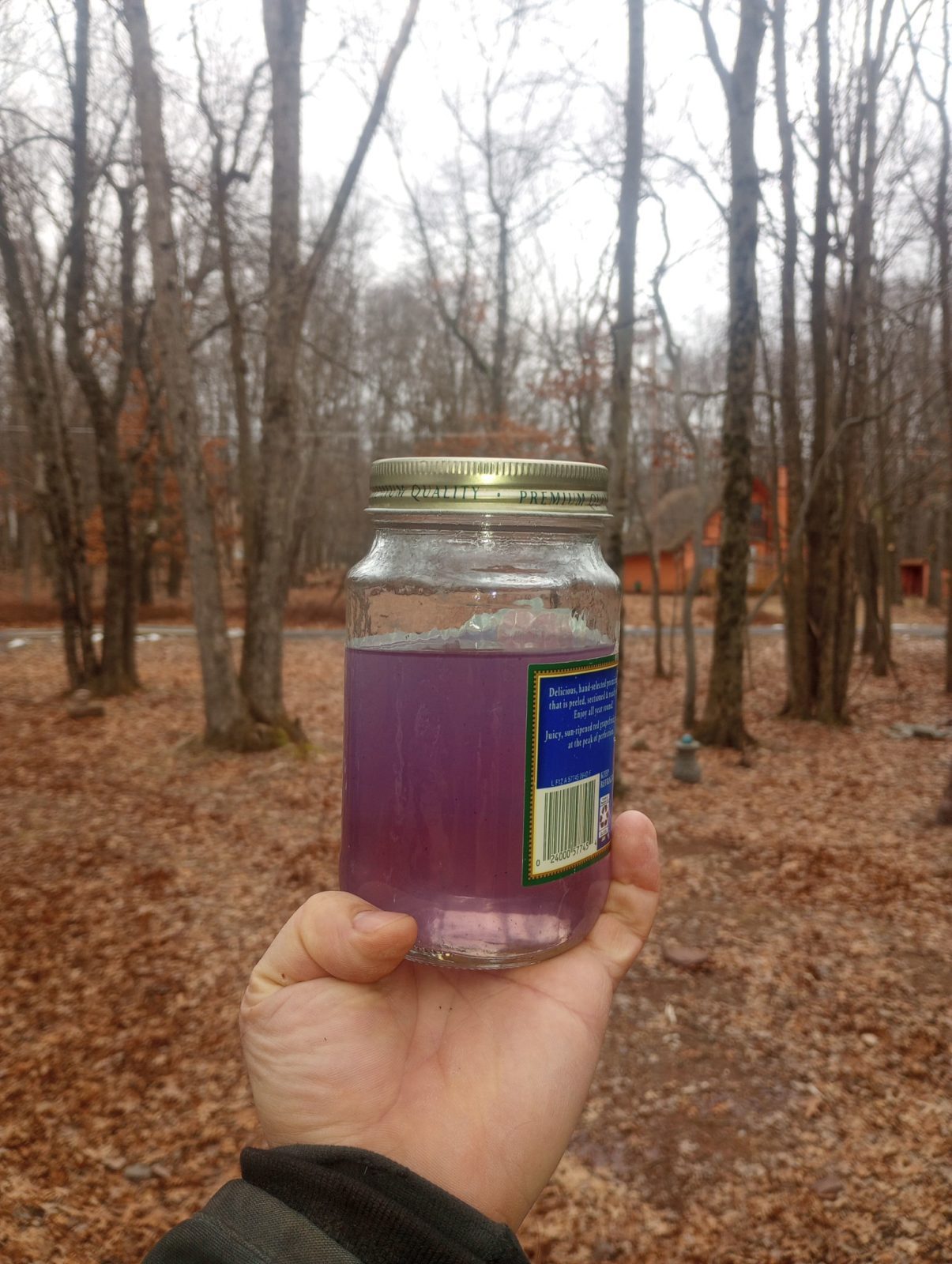
Silicate paint made from crystal cat litter
How I made silicate paint from sand
So for batch 2, I wanted to start from sand. Crystal cat litter is silica–it’s made from sand*. So how do I make the paint, starting from scratch? Experiments were conducted and the internet was scoured for information, chemists were consulted–but in the end, I just had to trust my hunch. The recipe I came up with worked, on the first try!
- 3 parts sand were added to 9 parts water.
- Then, I added 2 parts lye.
- Next, I added heat, cooking the mixture at a low simmer for 3 hours. A camp stove was used and a stainless steel pot.
- The resulting viscous fluid was strained, through a window screen material, to remove approximately 1 part of sand, which had not reacted, not transformed into the Sodium Silicate AKA water glass.
Photos, video and lab notes were taken. After another few batches are made and the formula perfected, we will post a detailed tutorial. If you wish to attempt this experiment yourself, I ask that you take proper precautions. Furthermore, I ask that you post in the comments and share any results that you have.
*and sand is made from quartz. Fact is, you could take a chunk of quartz crystal, crush it up, and make paint medium from it. Wild, right?
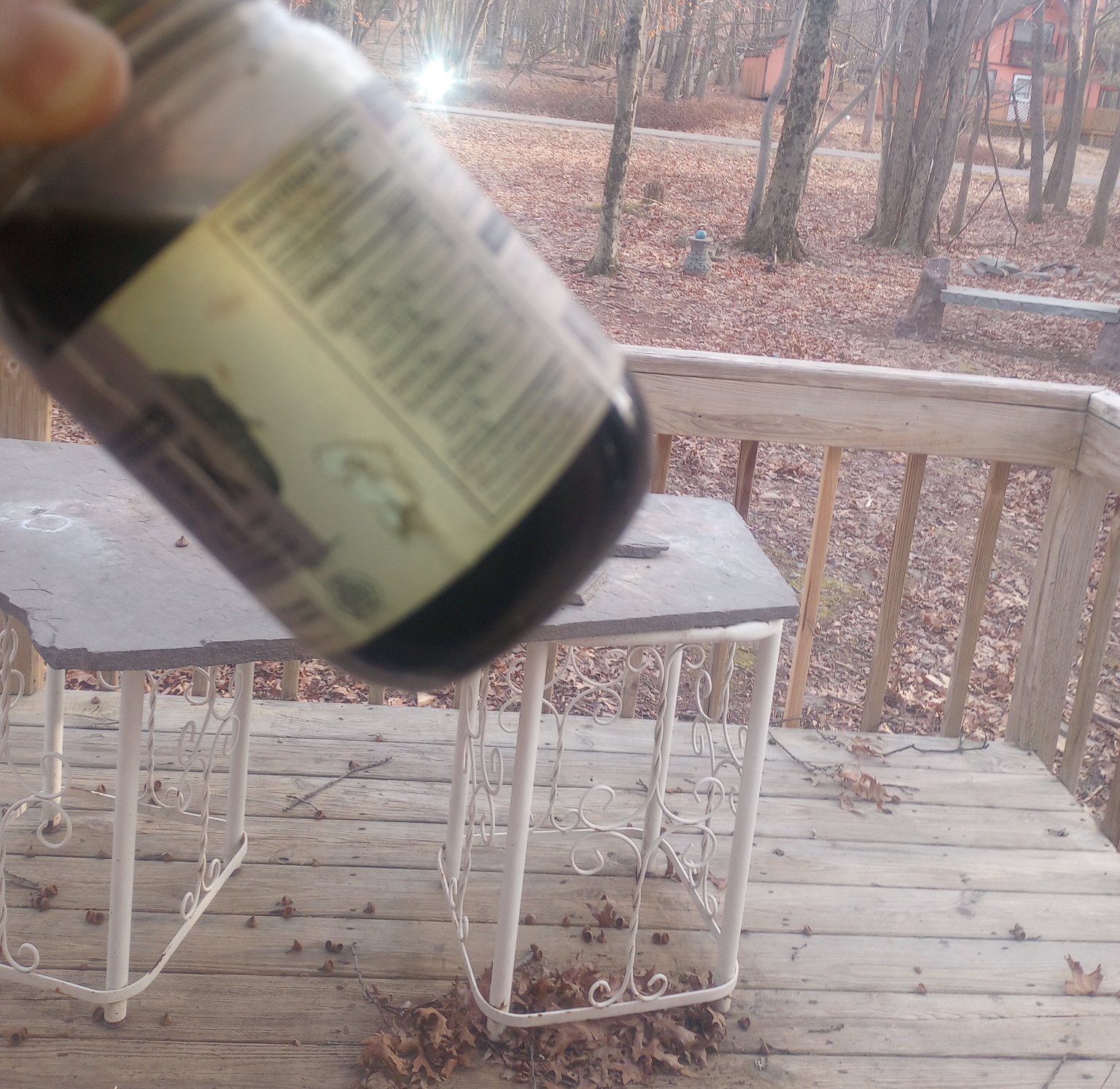
Surprisingly, the medium came out kind of dark colored, but transparent, when I made it from sand. Doesn’t seem to effect the color of the paints, even white paint.
Caution: wear gloves and goggles if attempting this at home! Have vinegar on hand–lye is caustic, can burn skin, burn eyes. Read up about lye safety!
Related Content: how to make artist paints from egg yolk and natural pigments
Results–using and storing the paint
So one of my big hopes, with making this paint, was to be able to store paint in jars, all mixed up and ready to go. Like store bought paints. To my surprise, so far, the results have been mixed.
I mixed some pigment and medium. Then, I allowed it to dry overnight. The next day I added some water to it, hoping to reactivate it, the way you can with water colors. It worked–sort of. The reactivate paint made colorful marks on stone, and paper, as hoped–and stuck to the surfaces well. But then a day later efflorescance was seen to form on the surface of the painting. Too much lye in the solution, perhaps? The thing is, the freshl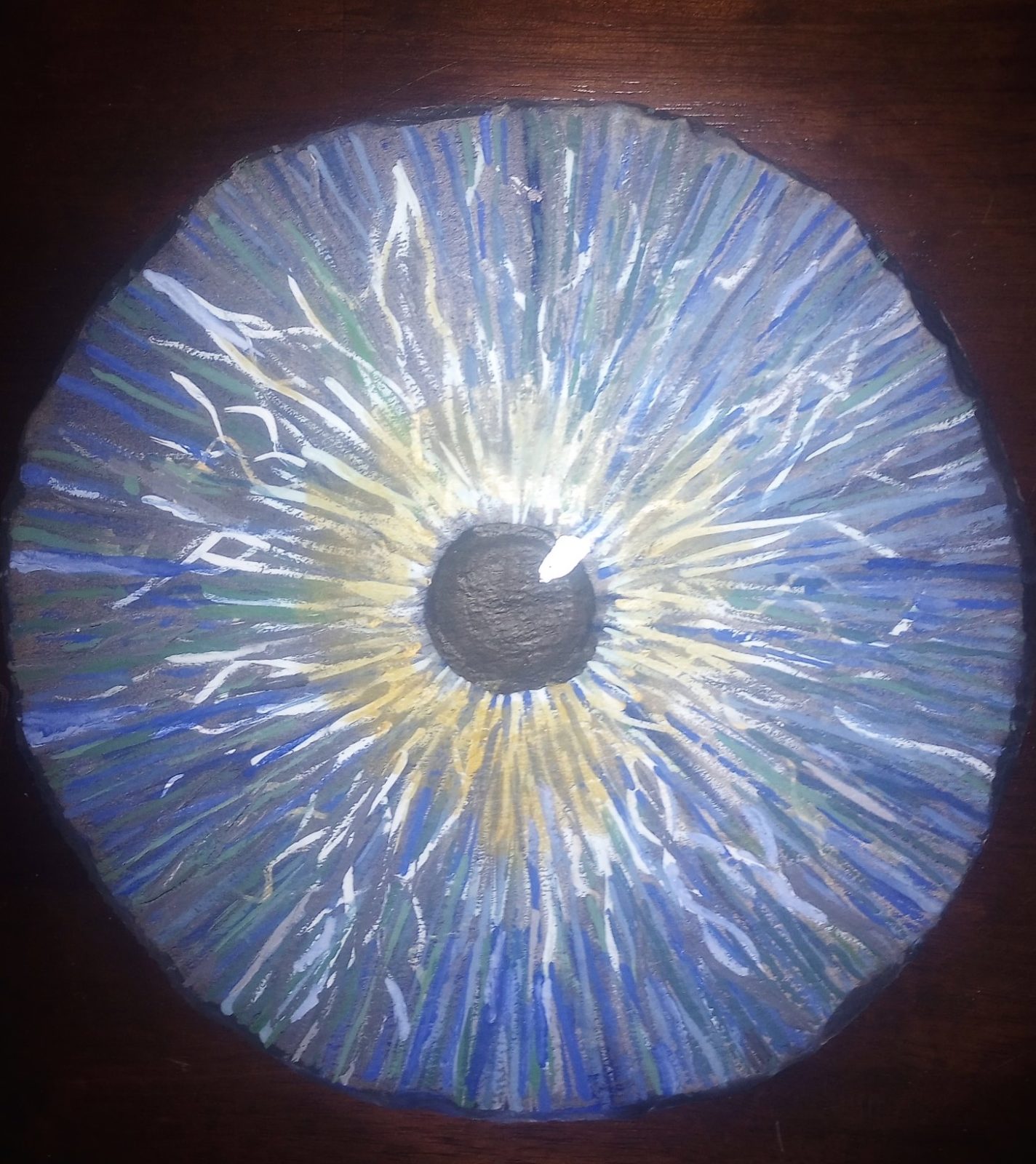 y mixed up paints have not effloressed at all, yet, in the month or two that I’ve been experimenting with these paints.
y mixed up paints have not effloressed at all, yet, in the month or two that I’ve been experimenting with these paints.
Some paint was mixed up and sealed in jars. This paint however, acted strangely. The paint seems to have hardened up in the jar–with clear paint medium, floating on top.
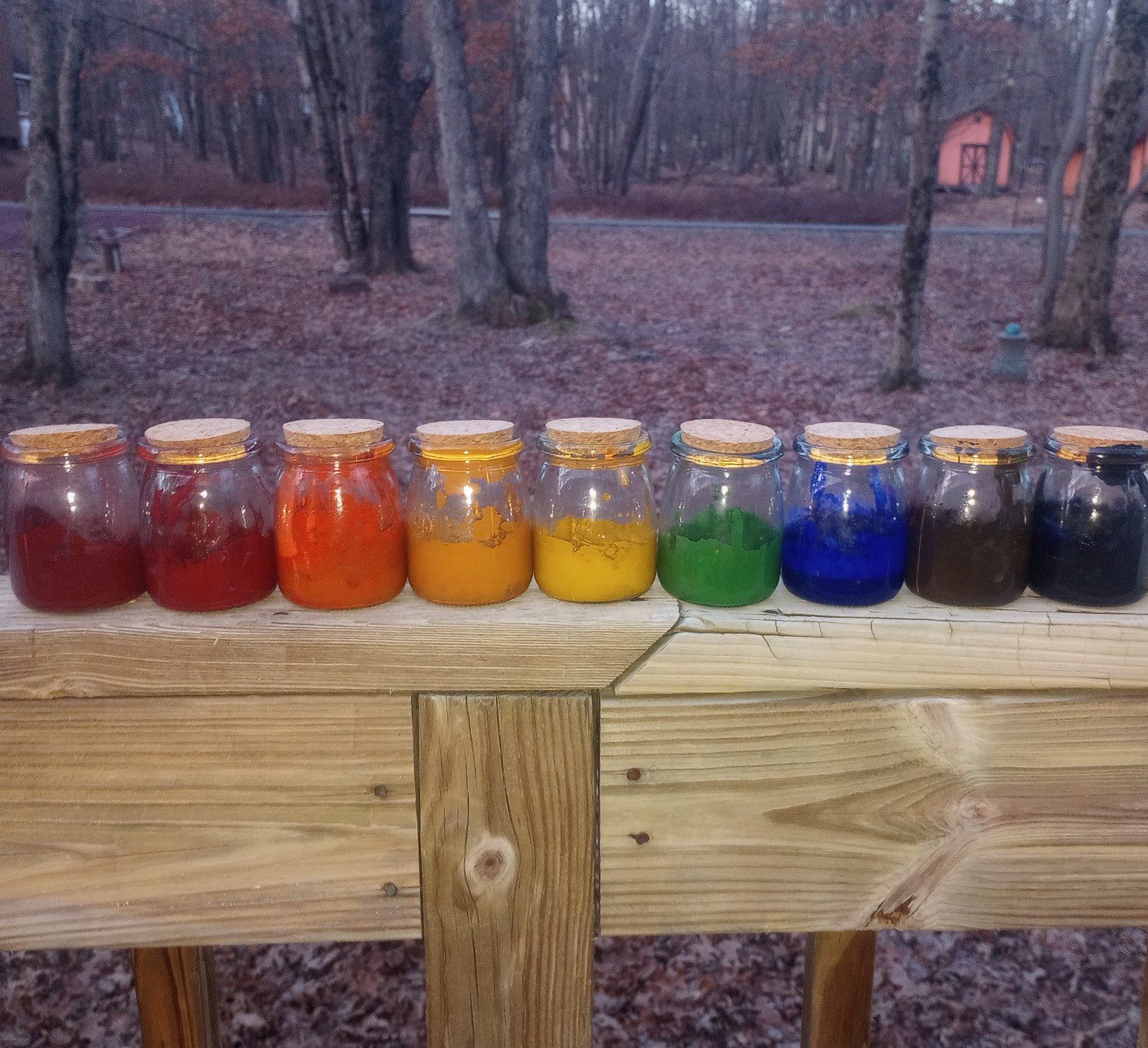
Ultimately, if the paint needs to be mixed every day, before painting is done–then that’s not such a big problem, as the mixing doesn’t take long at all.
Advantages of silicate paints over other natural paint mediums
- You can paint for hours, without mixing new medium. Egg tempera, by contrast, will start to become aromatic, after an hour or so, and has to be re-mixed.
- I don’t know for a fact, yet, how long my home made silicate paints will last–but historically, silicate paints have lasted outside, for centuries.
- You can mix up a big jar of medium and just have it on hand, ready to go.
Challenges and questions still remaining about using silicate paints
- Can the paint be made less caustic, and still work? The paint I’ve made so far will make your skin tingle a bit. If you leave it on your skin for awhile, it sometimes begins to burn a bit. For the next batch, I will try to boil longer, for a more complete reaction. Perhaps that will make it less caustic. Also, will try to make some batches with less lye.
- Is there a way to make the paint easier to store–either in jars, or dried and reactivated, like water colors? If not, we’ll streamline our daily paint mixing method.
Further experiments:
Next week I’ll be making a medium truly from scratch. Hardwood ash will be used to make potassium hydroxide, instead of using commercially produced lye (which is sodium hydroxide).
A few selected artist will be given some medium and pigment so that they can offer their own reviews and share their creations. Check back on this blog and/or on social media next month.
Paint medium will be made using less lye. Longer boil times will also be experimented with. Possibly a solution using less lye, a longer boil, and more water, may result in a paint that is a) aqueous enough to store in a jar with hardening up and/or b) a less caustic solution may be one that can be reactivated after drying, without efflorescence.
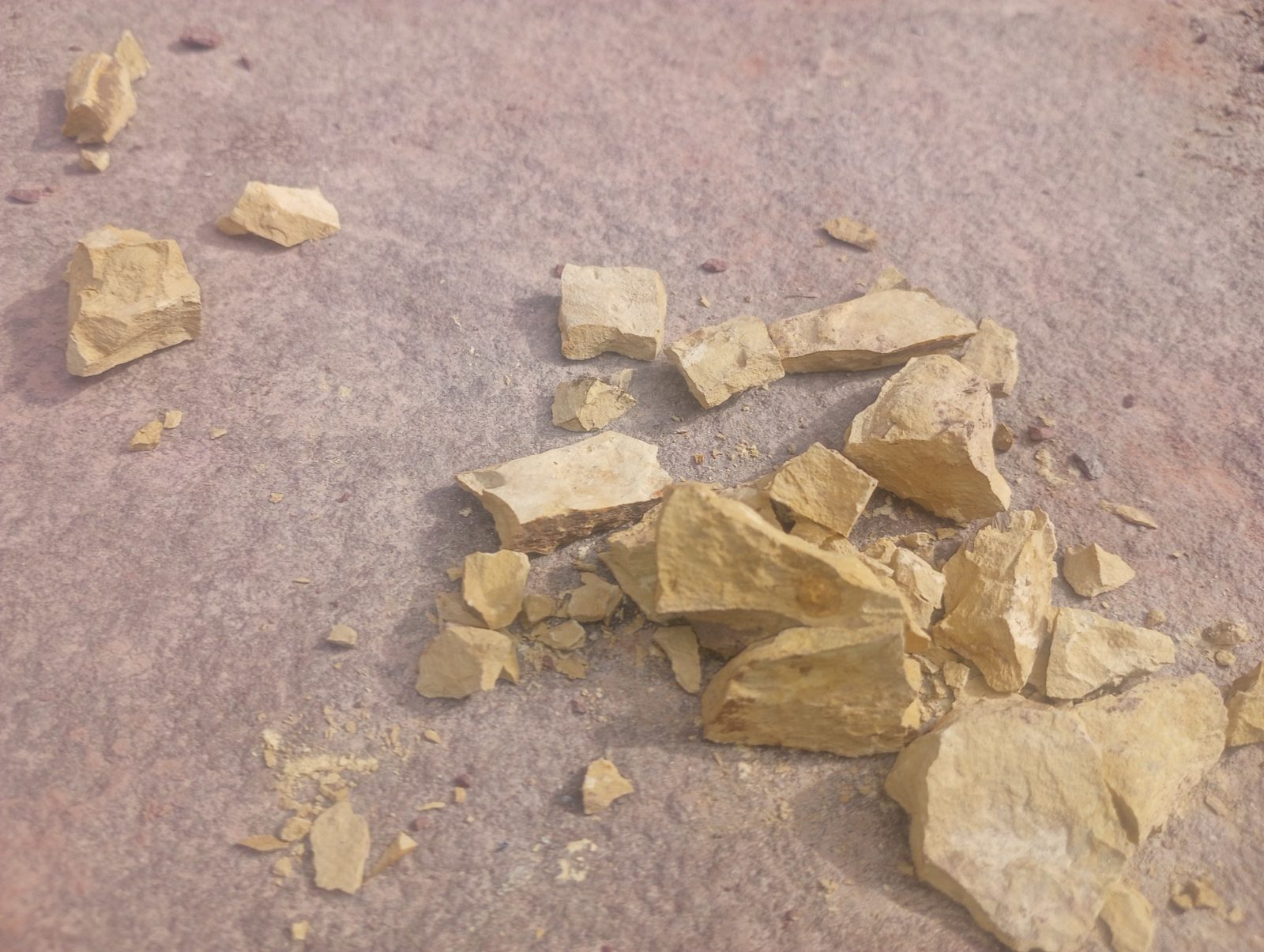
I collected these soft yellow stones in Southern Virginia, while creating a dry stone sculpture. These stones are soft enough that they can be used to write with, like chalk–they crush up into pigment powder easily.
We’ll be teaching a natural paint making workshop in Llano Texas, at the Llano Earth Art Fest, on March 24th. Be there!
This class will explore different paint mediums, pigment sources, how to make the paints and how to use them.
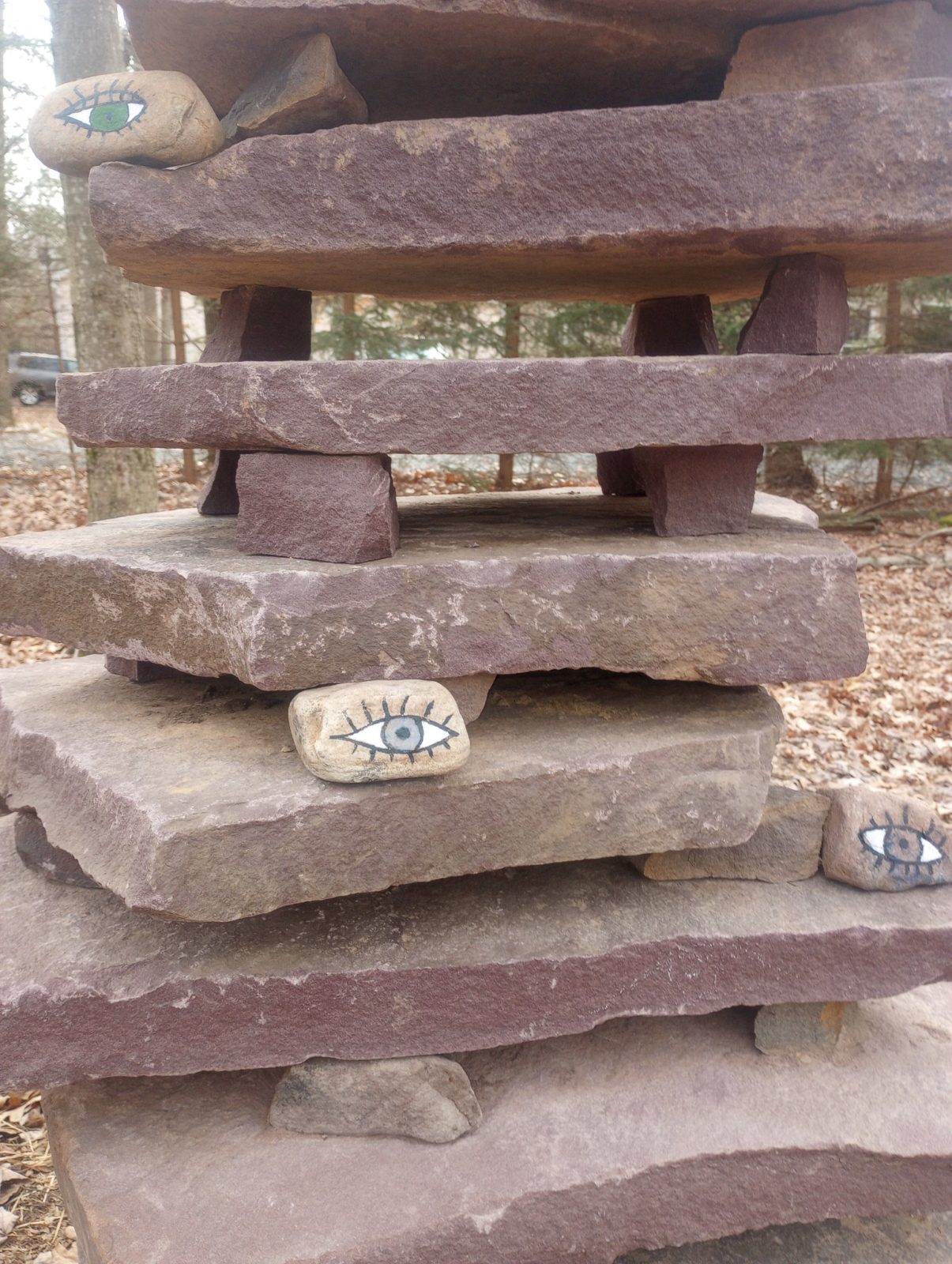
stone cairn with eyes.
Can you spare a time to have a phone conversation on a sculpture I’m in need of pigment ideas. The piece will bee an outdoor long term art piece for the city of Sedona. I’m technically challenged but still possess my verbal skills.
Thanks
Mark
Mark,
I sure can. Sounds like an interesting project. Email me at devin@devineescapes.com to set up a time. I have flexibility tomorrow, late morning or early afternoon.
What is the ratio of paint pigment to the medium you used?
Eyeball it. About a pinch of pigment to a teaspoon of medium….but really, it depends. I add pigment till it looks good. Add more medium if desired, add different pigment as I go.